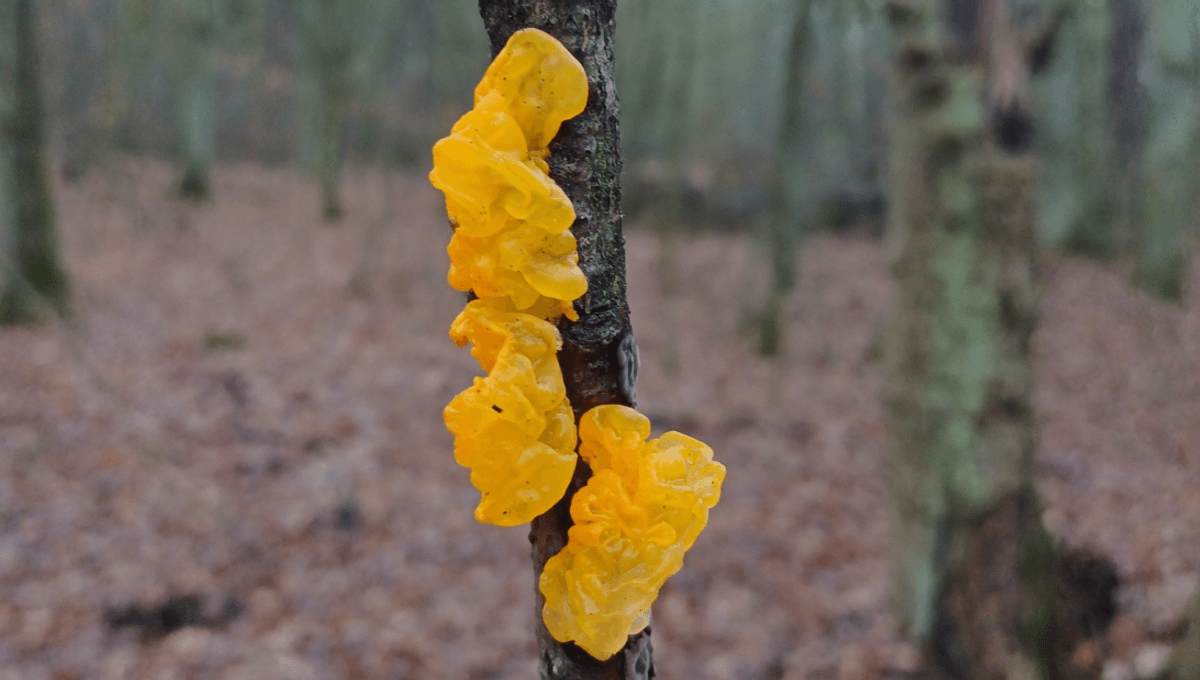
If you’re out wandering in the woods one day and you spot what looks like a little yellow brain splatted onto a branch, you might have just stumbled across witch’s butter. The curious fungus was once said to be a sign that a witch had placed a curse on a family if it appeared on their gate or door, but there’s really little to fear above the noises it makes when prodded.
What is witch’s butter?
The yellow lobes are the fruiting body of the golden jelly fungus, Tremella mesenterica, and it makes an appearance year-round but is particularly prevalent during winter. Its species name stems from the Ancient Greek for middle intestine, and we probably don’t need to tell you why. You can find it in the UK, Ireland, America, Asia, and Australia, typically gooing its way across branches and fallen bits of dead wood.
It’s not the wood that witch’s butter is after, however, as golden jelly fungus is actually a kind of parasite that feeds on wood-rotting fungi. They’re particularly partial to rosy crust fungus, Peniophora incarnate, which can be hard to spot as a rusty brown and may be entirely enveloped in the sulfur yellow of this parasite.
Can you eat witch’s butter?
According to the Missouri Department of Conservation, the T. mesenterica variety of witch’s butter (more on this later) is edible, but you might not want to bother. While it’s sometimes used to give a signature texture to soups in China, the Woodland Trust says that its lack of substance and flavor make it an unpopular choice among foragers.
Does that mean people don’t seek it out? Oh, no no no. You see, there’s an entire world out there of fungus ASMR.
This video of YouTube user Fascinated By Fungi “Flicking a Wet Witches Butter Fungus” has amassed 55,000 views at time of writing. It’s certainly a memorable sound, but one we perhaps don’t recommend playing out loud if you’re currently some place in public.
Scientific uses for witch’s butter
Beyond appealing to those with an ear for moist mushrooms, witch’s butter may also be a natural source of compounds that could be useful in medications. Research into its possible medicinal properties has explored immune function, diabetes, and antioxidant activity, so perhaps one day it could take on a new role in our medicine cabinets. Less of a curse, more of an opportunity, I say.
If vibrant yellow isn’t your favorite hue of mystery goo, might we offer the forest-green of troll’s butter? Also known as witch’s butter or star jelly, Nostoc is a genus of cyanobacteria that can often form big, gelatinous colonies. Impressively, it’s conquered both water and land thanks to an impressive suite of survival strategies.
Source Link: Found Some Weird Yellow Goo On A Tree? It Might Be “Witch’s Butter”